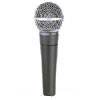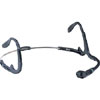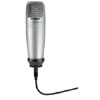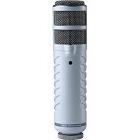Resources for Singing Teachers
This page contains a selection of teaching resources (most of the links go through to Amazon.com) that complement the Sing & See software. If there are other items that could be usefully listed here, please contact us with your suggestions.
Books - Microphones - USB Audio Input
Books on voice acoustics and voice science
These books present a range of perspectives on the singing voice. Garyth Nair describes in great detail how the spectrogram can be utilised within the singing teaching studio to show details of the voice and thereby help in the pedagogical process. Although he uses a different spectrogram package, the principles he describes apply equally to the spectrogram view in Sing & See (Professional).
Sundberg's book is a comprehensive description of the singing voice from a scientific viewpoint, drawing on his research in singing acoustics and physiology. Titze's book provides an in depth scientific description of the acoustics and bio-mechanics of (singing) voice production. Finally, Richard Miller's book provides both a good introduction to the basics of vocal acoustics and physiology, and a systematic vocal pedagogy that ties together "scientific" and "artistic" views of the singing voice.
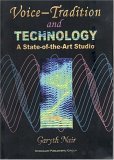 |
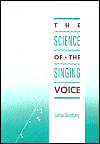 |
 |
 |
| Garyth Nair - Voice - Tradition and Technology |
Johan Sundberg - The Science of The Singing Voice |
Ingo Titze - Principles of Voice Production |
Richard Miller - The Structure of Singing |
Microphones
Here are a few high quality microphones that we're glad to recommend for use with Sing & See. Cheaper microphones will usually work well also, but there is more risk of distortion or overloading. If you are purchasing one of these microphones you'd be best to also consider a high quality sound input device such as the ones below - but note that if you get one of the newer USB microphones (ie the Røde or the Samson) this isn't needed because the microphone includes a high quality audio converter already.
| The legendary
Shure SM58
has been a favourite of vocal performers for many years. This is a dynamic
microphone that can be plugged into a microphone amplifier or directly
into most PC microphone inputs (with a suitable 3.5mm plug adaptor since the standard model comes with an XLR connector). |
|
| The AKG C420 Headset Mic is a high quality headset condenser microphone that we have used for much of the research that went into developing Sing & See. It requires phantom power, which can be provided by an external microphone amplifier such as one of the USB ones detailed below. We have used this microphone and would recommend it highly - because it is a headset it means your students don't become distracted by trying to sing to the microphone. | |
The Samson CO1U USB Studio Condenser Microphone is a condenser microphone that plugs directly into the USB connector of your PC, and so provides a high quality sound input without the need for an external phantom power unit. We haven't used this one yet but the specifications look good! |
|
The Røde "Podcaster" is a new USB microphone from Røde in Australia. It consists of a studio quality dynamic microphone and built-in high quality (18 bit resolution) analog-to-digital converter that plugs directly into the USB connector on your computer. There is also a headphone socket on the microphone itself which is quite handy. We have used this microphone and would recommend it to anyone who wants a high quality microphone for use with Sing & See. |
Audio hardware
These USB audio input devices can help to improve the quality of your voice recording, compared to the built-in audio input on your PC. They plug directly into a USB port on your PC, and provide an external box into which you can plug your microphone. Both are available from Amazon.com by clicking on the links below.
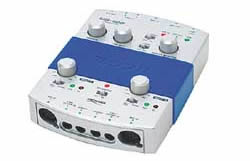 |
The Tascam US122 provides two XLR microphone inputs, complete with 48V phantom power for condenser mics. The box is self-powered (via the USB cable) so requires no external power supply. It also provides the capability for 24 bit recording. | |
| The M-Audio Mobile USB is the perfect audio interface and preamp for your laptop recording needs. A total of three kinds of audio inputs and outputs provide maximum flexibility for any application—including two on-board microphone/instrument preamps. MobilePre USB is completely bus-powered so you can take it anywhere you need to record and play music. |
 Find
out more about Sing & See software for singing training.
Find
out more about Sing & See software for singing training.

